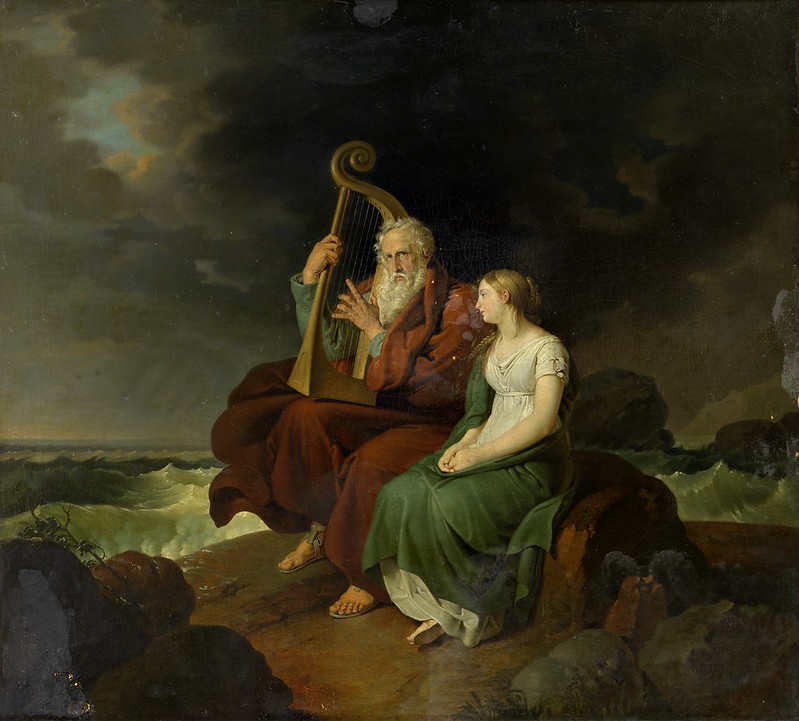Johann Nepomuk Hummel (1778-1837)
- Messe Nr. 2 in Es à 4 Voci, Op.80 (1804)
Performers: Adriánа Kаlаfszky (soprano); Viοlа Thurnаy (contralto); Zοltán Mеgyеsi (tenor); Ákοs Bοrkа (bass);
Purcеll Choir; Capella Sаvаriа; Nichοlаs McGеgаn (conductor)
Further info: Johann Nepomuk Hummel (1778-1837) - Te Deum
---
Austrian pianist, composer, teacher and conductor. He was considered in
his time to be one of Europe's greatest composers and perhaps its
greatest pianist. Hummel was a prodigy; he is described as having been
more advanced at three than most children twice his age. At four he
could read music, at five play the violin and at six the piano. When he
was eight, the family moved to Vienna, where his father Johannes, a
string player and conductor, became music director of the Theater auf
der Wieden, a post that was to give his son useful theatrical
experience. Hummel made rapid progress as a pianist, becoming a pupil of
Mozart soon after going to Vienna. According to his father, the boy so
impressed Mozart that he taught him free of charge; as was often the
arrangement at the time, Hummel lived with the Mozarts. Making his debut
in 1787, he was so proficient that in 1788 Mozart recommended that he
be taken on tour of Germany and Denmark. By 1790 he and his family were
in Edinburgh, Scotland, where he took on pupils for a short time, and in
1792 he made his debut at the Hannover Square Rooms in London. He
returned to Vienna in 1795, where he studied organ under Joseph Haydn,
composition under Antonio Salieri, and counterpoint under Johann Georg
Albrechtsberger. During this period he began a long and often stormy
friendship with Ludwig van Beethoven, whom Hummel considered a superior
performer and composer, often lending him an inferiority complex. In
1804, Hummel became Konzertmeister at the Esterházy estate in
Eisenstadt, a position that was problematic enough that in 1811 he
resigned and turned to private teaching. In 1816 he obtained the
position as court Kapellmeister in Stuttgart but left after only a year
to take up a similar post in Weimar where he remained the rest of his
life.
For more than a century his reputation has been that of a typical
19th-century virtuoso specializing in piano music. This view of him,
however, is grossly incorrect. When his little-known unpublished works
and the bulk of his printed ones are placed beside his better-known
compositions, it becomes clear that his work embraced virtually all the
genres and performing media common at the turn of the century: operas,
Singspiele, symphonic masses and other sacred works, occasional pieces,
chamber music, songs and, of course, concertos and solo piano music, as
well as many arrangements. Only the symphony is conspicuously absent
(and this fact alone testifies to his deeply felt rivalry with
Beethoven). He was, furthermore, a curious combination of the old
composer-craftsman and the new composer-entrepreneur. Enormous
quantities of music were written as part of his employment, but he was
also a freelance who rarely lacked commissions and who could not satisfy
all the demands of his publishers. His extraordinary ability to respond
to the needs of the musical market-place is illustrated by his
relationship with George Thomson, the Edinburgh folksong collector. The
arrangements done by Beethoven for Thomson were too difficult and did
not sell, but those by Hummel were just right. Yet Hummel, like
Beethoven, was a composer whose music normally demanded the highest
virtuosity. Stylistically, Hummel's music is among the finest of the
last years of Classicism, with basically homophonic textures, well-spun,
ornate italianate melodies, and virtuoso embroidery supported by
modernized Alberti accompaniments. His style, which is most modern in
works employing the piano, followed a straight path of development
throughout his lifetime, although after his return to the concert stage
in 1814 his compositions expanded considerably in expressive range,
harmonic and melodic variety, and brilliance. His music is known by Op
and WoO numbers in the Zimmerschied catalog.

Cap comentari:
Publica un comentari a l'entrada